The Origin of The Malay Language
The reason the Malays and Malay are still dealt with the experts, even in outline, they have reached some conclusions. Among other things, due to the southern region of Sumatra (Jambi-Palembang) until such time as this is an area that most have inscriptions in the ancient Malay language, the experts are still at the conclusion that the Malay language is derived from there.
Reasons Malay is also associated with an empire-style Buddhism never appeared in the southern region of Sumatra, the kingdom of Srivijaya. Therefore, they also concluded that the inscriptions of the ancient Malay language found in the southern region of Sumatra from before the emergence of Islamic kingdoms.
Jawi inscriptions (Sumatra) on a gravestone Ancient Queen Danir, Meunye Tujoh, Pirak East, North Aceh.
While the oldest inscriptions in the ancient Malay language created in the Islamic era and still use the old-fashioned script Sumatra, the experts agreed to appoint an inscription on a tombstone located in the Village phon Tujoeh, District Pirak East, North Aceh District, Aceh Province.
Nisan is the gravestone tomb of a queen whose name is mentioned in the inscription in Arabic. Some scholars have read it, but it concerns the name of the person buried, they produce different readings each other: Nurul A'la, Nurul 'Aqla, Nurul Ilah, Wabisah. I myself read: Danir or Dannir. Arabic inscription dates it also contains died on Friday 7 (9?) Hijjah 791 AH (26 November 1389 AD).
Arabic inscription on the tombstone of Queen Dinar in Meunye Tujoh, Pirak Timur, Aceh Utara
While inscription ancient Malay found on tombstones leg tombs have been dealt with by experts such as J. G. de Casparis, W. F. Stutterheim, Morisson, and most recently has been read and discussed by Willem van der Molen the inscription Islam oldest in Indonesia (2008).
In the inscriptions of ancient Malay language is also mentioned two names in the country where this queen has supreme lordship, namely Pasai and Kedah.
While rejecting roundly prejudice that inscription ancient Malay is present on the north coast of Aceh by the expansion of Majapahit, then it should be about the position of these two countries: Pasai and Kedah-even three countries if added Jambur Ayir-before the Islamic period, or with words where the influence of other contemporaneous Sriwijaya kingdom in southern Sumatra (geography Arabo-Persian: Jaziratul Maharaj) still dominates a large area covering the island of Sumatra and the Malay Peninsula to mainland Indochina.
The literature geography written in Arabic since Sulaiman At-tajir (3rd century AH / 9th CE) until Ibn Majid (died 906 AH / 1501 AD) refers to an area called Djawah (Javah) and refers to the northern coastal regions Aceh. Ibn Baththuthah longer containing information about Sumuthrah (Samudra Pasai) in his Tuhfah An-Nazhzhar mention the light, he had seen "Djawah" green from a distance of a half day sea journey.
Here, I understand the sensitivity of the people of Aceh to as "Java", but toponymy such as Krueng Java and Rayeuk Java in the interior of Krueng Pase, according to sources very reliable, has been known at least since before 100 years ago-leaders we interviewed for this information at that time (2010) was approximately 80 years old, and he spoke of toponymy that has been heard since the time of his grandfather who was named Commander Si Kleing of Meuraxa Lhokseumawe. Meaning, my sensitivity and you can not abort a reality.
Please be patient for a while because it will not all as we had expected all along, and do not get because of the sensitivity which is not entirely unreasonable that we are finally releasing something that essentially we have. Do you think that is sensitive, where did the term Jawi (جاوي) or Al-Jawi (الجاوي) itself? Jawiy is a ratio that since the 16th century have started life for the inhabitants of the leeward islands in India Rear, and Al-Jawiyyah be the name of a language which is the origin of Indonesian and Malay today.
Ibn Baththuthah in his call Djawah and Mul Djawah. Djawah, in the record year of 746 Hijri (1346 AD) wrote Ibn Baththuthah, is an area where the city found a large, beautiful and surrounded the castle and guard towers are made of wood. A Muslim sect followers sultan Al-Imam Al-a'zham Muhammad ibn Idris ash-Syafi'iy-Radhiyya-Llahu 'anhu. While Mul Djawah is a pagan country.
Before Ibn Baththuthah, Marco Polo in its report also mentioned the names of Java Minor land-land include Samara.
Headstone inscriptions in Matangkuli, North Aceh. Beep: Verse 15 of Al-Baqara
Then on the north coast of Aceh called Djawah (Javah) in the literature of Arab geography is something I do not doubt. Tracking the evidence for the existence of the core area of the region called by Djawah is also still do. Krueng flow area of Java and Java Rayek in District Geureudong Pase, Aceh Utara, are among the areas highly anticipated can present useful information on questions rasalan Jawiy or Al-Jawiy this.
CISAH Lhokseumawe, in 2011, has conducted large-scale expedition in remote areas are located approximately 20 km south of Lhokseumawe. In addition to the findings from the Islamic period, CISAH also found that encouraging clues about past life.
Something that has been found also through inscriptions on the tombstone is the name of the ancient lands that are believed to have existed before Islam, namely Pasai in the Krueng Pase, Kedah in the Krueng Keureuto and Pirak, and Jambur Ayir in the Krueng Jamboe Aye. Of these three areas, Kedah or Krueng Keureuto region is a region located in the most central part.
In 2012, CISAH has launched expeditions to spend a huge cost to roam the area and part Pirak Paya Bakoeng East for two months. From the expedition Government supported the North Aceh regency, CISAH bring home a variety of surprising information. Who would have thought if the area in the interior Keureuto which is the rearmost area in Aceh Utara and Aceh bounded by the middle of the jungle that is the center of the settlement is very dense, and worthy to be called as a government or royal ?!
Hundreds complex of tombs scattered along the banks of streams and rivers Krueng Keureuto Pirak as well as in the edge grooves of ancient water. Shards of pottery and ceramics found in the area, according to archaeologists Dedy Satria, also showed their class life of luxury, and have been able to import luxury goods since the 15th century AD The size and shape of the headstone on the tomb complex also some impressive presence of one A strong political territory since before Islam came.
From sourcing local community, CISAH finally found a clarity that is reliable that is meant to Kedah in the inscriptions of ancient Malay and Arabic in Meunye Tujoeh-also called a secondary source-is the central region of the flow of the river Krueng Keureuto and Pirak, and altogether instead of Kedah in the Malay peninsula.
Two toponymy in the area has become breakers suspicions regarding the position of Kedah is the inscription Meunye Tujoeh. First, a place known by the public as Abeuk Kedah, which is a kind puddles or stagnant water that are relatively large and often overgrown clumps of staple thatch as well as crop water suction more, and usually also formed from the former site of the deepest (leubok) from a stream rivers that have not functioning due geomorlogis process. Second, the location called Juroeng Ma Prang Kedah, meaning the hallway warlords Kedah.
A conclusion that can be drawn clearly from scientific data that has been discovered is that Pasai, Kedah and Jambur Ayi is an ancient areas in the region which was then introduced by sailors centuries of Islamic domination by the name Djawah (Javah). And among these regions, Kedah or an area between river flow and Krueng Pirak Keureuto Krueng has provided significant clues about pre-Islamic culture through historical relics Islamic era.
Apparently, Kedah is an ancient kingdom that is rapidly and occupy higher strata in the culture, in addition to clear, and can still be seen until today, he is the most fertile region in the east coast of the north, and has a rich forest. All this would be capital for Kedah to achieve a high level of culture and civilization. And appropriate evidence is found, absolutely can be said that Kedah is a kingdom in terms of history today in clumps right into the ancient Malay kingdoms. As an important note here that I can not miss is my view of the ancient Malay kingdom terminology. In my view, this is the naming which I guess was wrong. Most relevant terms and have stronger fundamentals actually the ancient kingdom of Jawi. Presumably, in the history books taught in Aceh later, the ancient Malay kingdom terminology can be exchanged and aligned with the mention of "the kingdom of the ancient Jawi / old".
So it makes sense then, in the 14th century AD, the body of a queen had been buried there because Kedah is the land of his ancestors, and his grandfather was King of Kedah as dictated in Arabic inscription on the gravestone grave. She was the daughter of Sultan Al-Malik Az-Zahir bin Raja Khan, son of Raja Kedah encountered by Ibn Baththuthah when it comes to Sumuthrah in the mid 14th century AD
Tracking to penetrate the recesses of an earlier time have been carried out but have not produced the expected data. Perhaps, due to new research conducted limited review of the surface, and only once stage until now. However, the surrounding area is very promising and their findings are important concerns developed culture in pre-Islamic times, the origin of Jawi culture that is less wear today has been called by the Malay culture.
For the supporting evidence for the depth of the cultural roots of Jawi in Kedah or watershed area Krueng Pirak Keureuto and I show a tombstone inscribed Arabic, found in Matang Kuli subdistrict, North Aceh. The side that need to be considered on a tombstone is a matter being discussed are: the model calligraphy, as well as inscriptions which sounds much less to attract attention.
By comparing this model of calligraphy on a tombstone with the inscription on the gravestone of ancient Malay Queen Dannir in phon Tujoeh can be considered a closeness that tells the influence model of Arabic calligraphy with the words of ancient Malay. To date can not be determined where the older of the two tombstones because of readings while, has not been found dating to the gravestones in this Matangkuli. While the tombstone of Queen as already mentioned above listed dates the death of 791 (781) Hijra.
Until now, although it has been exerting every effort to find the tomb owned three other figures mentioned on the tombstone of Queen Dannir, Sultan Al-Malik Az-Zahir, King Khan and Raja Kedah, but these efforts are still not reaping the rewards. So, okay, headstone inscribed tomb Arab in Matangkuli it is owned by one of the three leading figures, or someone who has died before the Queen Dannir. In terms of typology tombstone is unique and still somewhat in the model representing the 14th century AD Something that then supports the oldness tombstone of Queen Dannir tombstone inscriptions are intrinsically rare sound-even as I recall-has never been found on tombstones -nisan Samudra Pasai.
Headstone inscriptions in Matangkuli, North Aceh. Beep: Verses 1-5 of Surah Al-Baqarah
The inscription is the sound of the verses of the Qur'an at the beginning of Surat Al-Baqarah, verse 1-5. Namely, the verses in the arrangement of the Qur'an is the first after Al-Fatiha. Here's the sound inscriptions:
أ.
1. الم ذ(لك) الكتاب لا
2. ريب فيه هدى للمتقين / الذين (يؤمـ)نون بالـ
3. لغيب ويقيمون الصلاة / ومما رزاا (؟) قنا هم
ب.
1. ينفقون والذين / يؤمنون بما أنزل (إليـ)ـك
2. وما أنزل من قبلك / وبالأخرة هم يو
3. قنون أولئك على هد(ى) / من ربهم وأولئك هم المفلحون
These verses would annunciate a beginning; verses explain and instill confidence in importance of the revelation of God, as well as principles rather than Islam. It is a matter pertaining presumably these verses engraved on the tombstones of the first period of Islam blooms in Samudra Pasai, ie within a period of the 14th century AD
Importantly, the calligraphy as well as on the gravestone clearly displays the influence by the culture that once flourished in Kedah, and the area Djawah (Jawi) in general before Islam. One form of calligraphy resulting from mixing the taste of Arab and local specificities, the ancient Jawi script which is also still uses the antiquated before switching to Arabic script.
For further Jawi language development has been witnessed for the first one used in the Jawi element fretwork death dates on a tombstone. Calendar with the words Jawi figures have been found on some of the gravestones in the 15th century. This marks the Jawi language has undergone significant developments that are used in the calendar on the monuments such as grave markers. But the use of words on a tombstone Jawi numbers observed increased in the late 16th century AD in Aceh Darussalam. In fact, at the beginning of the 11th century Hijri, and still at the end of the 16th century AD, was found a tombstone with the inscription entirely Jawi language. It shows the Jawi language has reached the peak of its development in the 11th century H / 17th M Aceh Darussalam. The conclusions resulting from the data on the tombstones, to date, seen in line with the development of language in the world Jawi manuscripts. Jawi language used by Nuruddin Ar-Raniriy, for example, looks already very well established and raw. Fair to say that the Jawi language grows and enlarges the content of the 15th century and the 16th AD and reached its well-established in the beginning of the 17th century AD
Although Aceh Darussalam era of the 16th century AD have led to the height of the Jawi language established in the works produced in the 17th century AD still recorded linguistic reasons Jawiy of Pasai area or the north coast of Aceh.
For this fact, T. Ibrahim Alfian has put forward the theory in Chapter IV of the book, chronicles Pasai, that Malay growing in the Kingdom of Samudra Pasai (1250-1524 AD) called the Jawi language by Poet Hamzah Fansuri (died 1590 AD) and Shaykh 'Abdur Ra'uf As-Sinkili (died 1680 AD).
Alfian then quotes the preamble Syarab Al-Hamzah'Asyiqin written as follows:
"Know that faqir and dha'if Fansuri Hamzah came to reveal the way to Allah and Allah ma'rifat with Jawi language in this book-God willing-so the servants of God who will not know Arabic and Pharisees in order to discuss he. The book is named Syarab Al-'Asyiqin namely Beverages All People Lust. "
He also quotes Sheikh Shamsuddin in Mir'atul Mu'min:
"... Most than noble than righteous brother ...; for they know Arabic and Persian, but they were not known but nevertheless Pasai language."
And a description of an extremely bright attributing the Jawi language to language description Pasai is dinukilkan T. Ibrahim Alfian of the At-Thullab Mir'at, most remembered works of Shaykh 'Abd As-Sinkili Ra'uf:
"So that is Hadarat the majesty [Paduka Seri empire Tajul 'Natural Shafiyatuddin Shah] has said to me, rather than very Lebai religion Prophet that I invented for him a book with language Jawi dibangsa to language Pasai Muhtaj [needed] to those who assume the position qadhi ...... "
Pasai language and Jawi language, thus refers to a language that comes from the north coast of Aceh and experiencing the beginning of its development as early as the 14th century AD to the 15th century AD, which then continued in the 16th century Aceh Darussalam.
In line with the development of broadcasting Islam in Southeast Asia, then Jawi language itself became the language of the various nations in the region. As Islam has been accepted and developed amazing in Southeast Asia in the centuries 15th and the 16th, so too in turn with language Jawi reap new territories vast island of Borneo, Bugis up to Sulu in the east , As Muslims, the speakers of Jawi was scattered from Aceh in the west to the east the Sulu region, even across the ocean India to Madagascar. In that time, the 15th century and into the 16th, he became the Lingua Franca, interface language communities in Southeast Asia.
Prior to an end a short conversation or a stub in this topic, it appears appropriate to me also ask you one new findings as an additional authentication data on what has been proposed by T. Ibrahim Alfian. I guess, suppose the late Prof. T. Ibrahim Alfian, the professor of the history of it, they are destined to live until now and watch this new discovery, indeed it would be very joyful heart, may God Almighty bless and expand his grave.
Colophon of manuscript text that explains Sheikh Nuruddin Ar-Raniry translating his works with language Sumathrah (Samudra Pasai). Manuscript: Manuscript Luengputu Malay Aceh
As for me, it really unimaginable joy of my heart to the accompaniment of gratitude to Allah 'Azza wa Jalla after seeing one of the collections Ananda my kind, Tengku Masykur bin Syafruddin Luengputu, the collector of famous young, who exhibited in the hall UIN Ar-Raniriy about a year ago! In the colophon of a manuscript on display contained the lines as follows:
والله أعلم بالصواب وقد فرغ الفقير إلى الله تعالى شيخ نور الدين محمد جيلاني ابن علي ابن حسنجي ابن محمد حميدالرانري سكنا والشافعي مذهبا من جمع هذه الأحاديث (كذا) النبي صلى الله عليه وسلم وترجمها بكلام السمطرة يومالجمعة من شهر شوال سنة خمسة والعشرين بعد ألف غفر الله [له] ولوالديه آمين
تمت كتاب فد هاري جمعة فد وقت ظهر دان يغ ميوره محمد علي دان يغ امفوث تكو تنجغ فاسي وصلى الله علىخير خلقه محمد وآله وصحبه وسلم وتمت
(And God is Knowing of the truth. The one who faqir (very concerned) Allah Ta'ala, Nuruddin Shaikh Muhammad Jilaniy bin 'Ali bin Muhammad bin Hamid Hasanjiy, Ar-Ranir residence, As-Syafi'iy his school, had completed gathering (and develop) the hadiths of the Prophet Shallahu 'alaihi wa sallam, and translate the language of Sumatra on Friday of the month of Shawwal year after twenty-five thousand (1025) [AH]. May Allah forgive [him] and for two people parents. Amen.
Tammat book on Friday at noon, and the correspondence of Muhammad 'Ali and the owner Teuku Tanjoeng Pasi. Along with greetings and blessings of God upon the best of His creation Muhammad and his family and his companions.)
Colophon of manuscript text that explains Sheikh Nuruddin Ar-Raniry translating his works with language Sumathrah (Samudra Pasai). Manuscript: Manuscript Luengputu Malay Aceh
Many things are unexplainable of rows in the colophon of this, but one of them that should be highlighted with regard to the topic of conversation is a statement that Shaikh Nuruddin Ar-Raniriy have translated the Book of Hadith this arrangement with the language of Sumatra. The word "Sumathrah" written in this manuscript exactly like the word "Sumathrah" contained in Rihlah Ibn Baththuthah. This means Sumaththrah question is Sumathrah city which today is better known as "Ocean Pasai".
With these new findings explained that the reference to the language Jawi language Pasai and language Sumathrah is a language that has been developed and refined on the north coast of Aceh, or rather in the territory of the Kingdom of Samudra Pasai, and later became the lingua franca in East Asia, particularly in the country -negeri Muslimya. Language is rooted in Jawi (Malay) ancient Those already exist and have been instrumental in the said lands in the north coast of Aceh such as Pasai, Kedah and Jambur Ayir.
This is, presumably, the origin of the Malay or Indonesian is spoken today and has been the official language of Malaysia and Indonesia. I am very sure, if no Samudra Pasai (Sumuthrah) at first, and if no Malacca and Aceh Darussalam on later, it is this language will not achieve the established period and became the lingua franca throughout the Southeast Asian region. I guess, the big countries such as Malaysia, Brunei Darussalam and Indonesia had been indebted to Samudra Pasai, as well as the Malacca and Aceh Darussalam, on modern Jawi language spoken by its citizens today.
This article translation of our website: mapesaaceh.com
See also related article: misykah.com, pedirmuseum
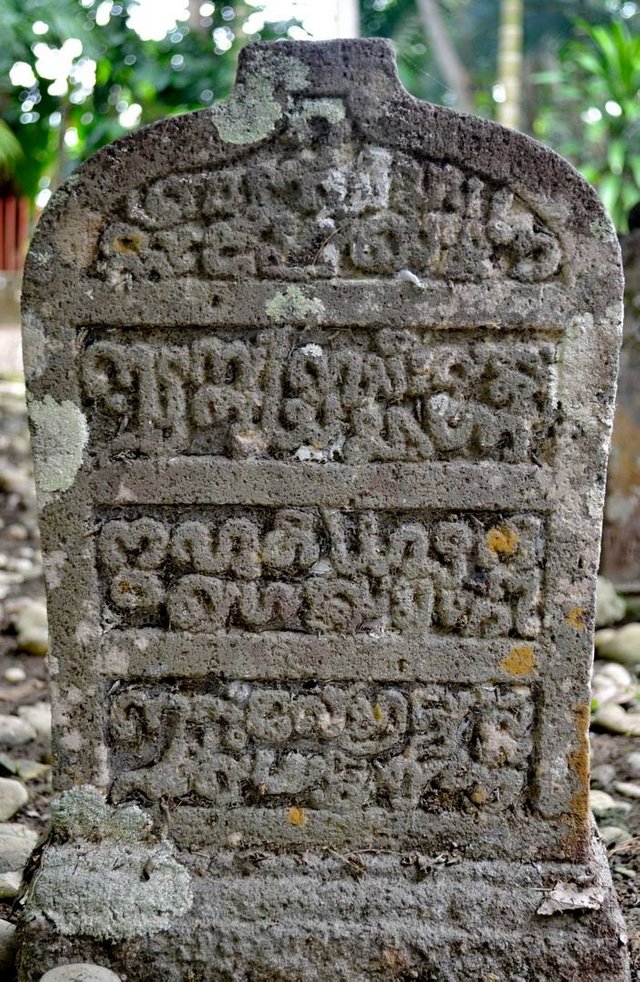
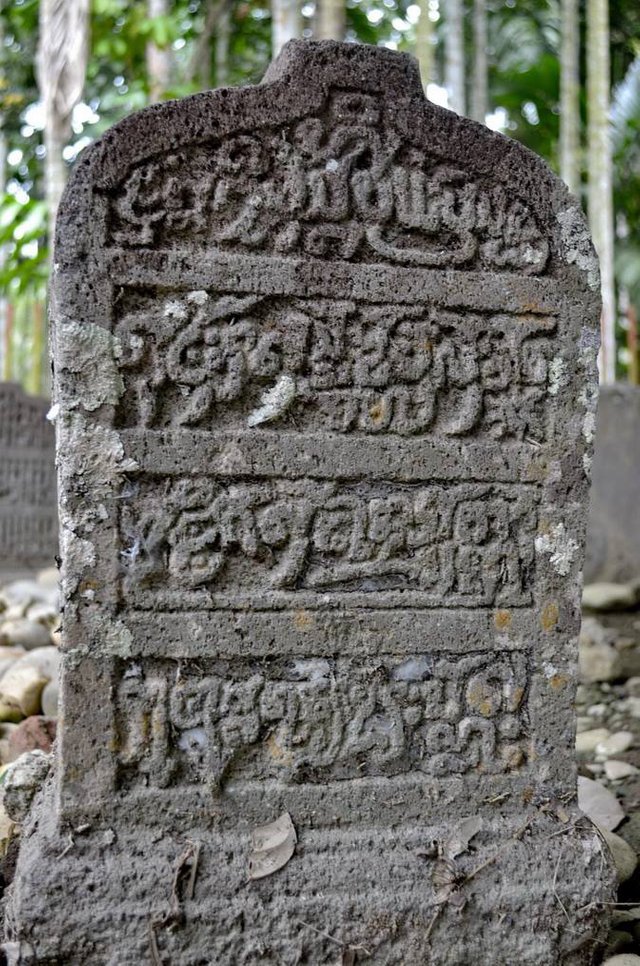
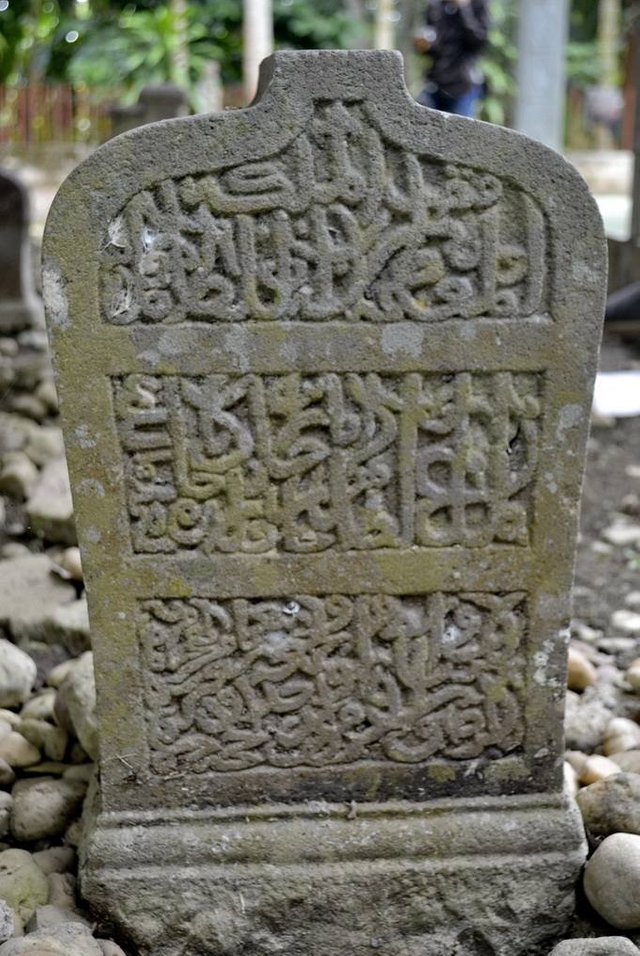
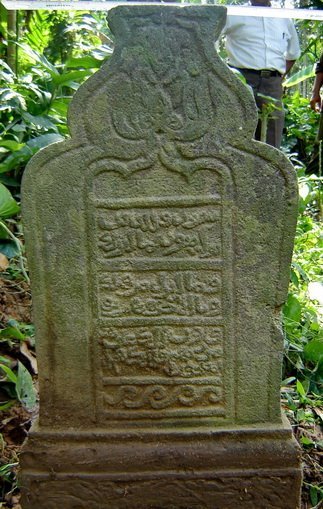
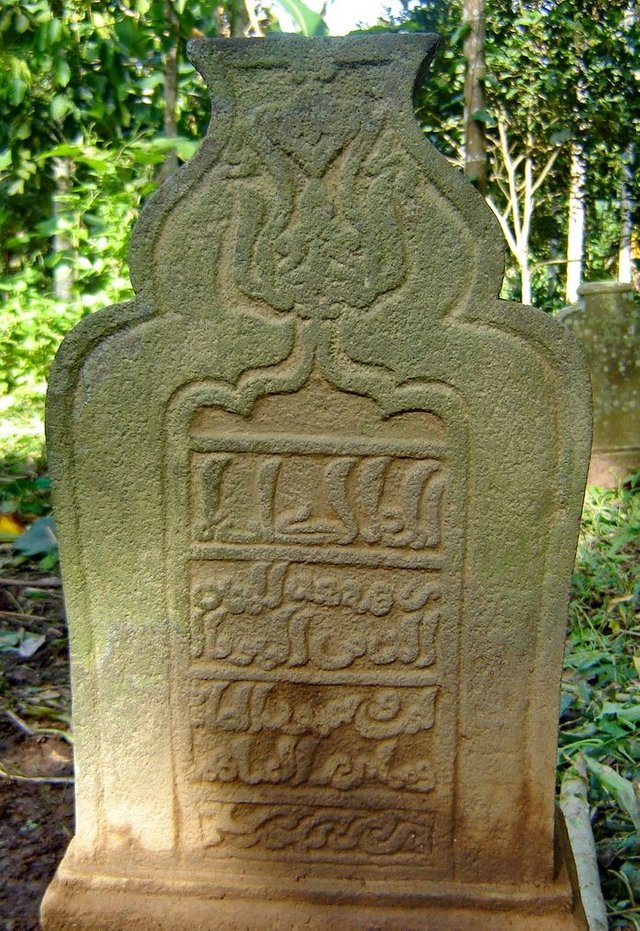
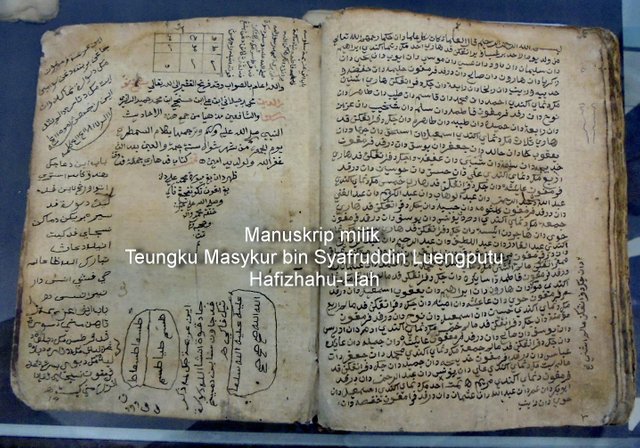
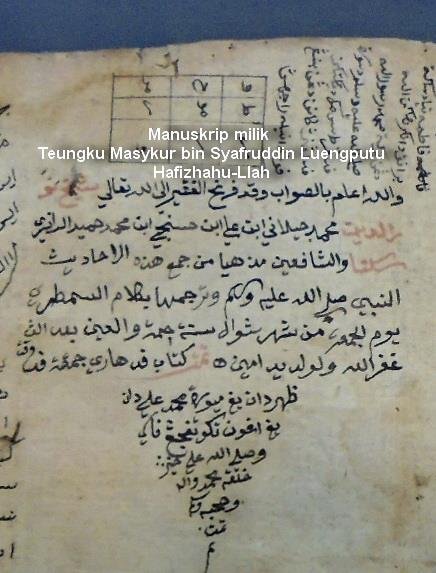
Interesting read